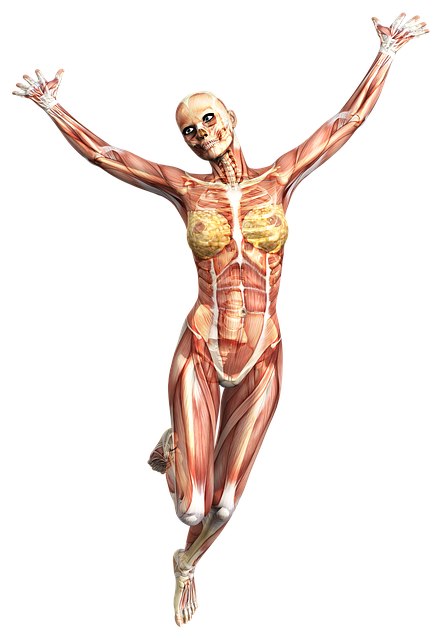Holographic medical imaging provides 3D visualizations of complex biological structures, surpassing traditional 2D imaging. This technology enhances diagnostic accuracy by offering detailed views of anatomies, facilitating early detection of abnormalities and improving treatment interventions. By enabling precise navigation of intricate body parts, holographic imaging revolutionizes healthcare diagnostics, ultimately leading to better patient outcomes and enhanced confidence among medical professionals.
“Holographic medical imaging is transforming diagnostics, offering a deeper, more precise view of internal structures. This article explores the revolutionary impact of 3D imaging in healthcare. By delving into the benefits of holographic insights, we uncover how it improves visual precision and enables the detection of intricate anatomies previously obscured. Furthermore, we discuss its role in enhancing patient safety by minimizing diagnostic errors. Finally, we gaze into the future, where integrated 3D technology promises to redefine healthcare practices.”
Unveiling Complex Structures: Holographic Insights
Holographic medical imaging offers a revolutionary approach to visualizing complex biological structures, revealing insights that traditional 2D imaging methods struggle to capture. By capturing multiple views and angles simultaneously, holography provides a three-dimensional representation of organs, tissues, and blood vessels with unprecedented detail. This depth of information allows healthcare professionals to navigate intricate anatomies more accurately, detecting subtle abnormalities or structural variations that might be hidden in conventional images.
The ability to view biological specimens from different perspectives enables more precise diagnostic decisions. Holographic imaging can help identify complex tumors, unravel the intricacies of vascular networks, and even map out delicate organ surfaces. This advanced visualization technique promises to enhance diagnostic accuracy, leading to earlier and more effective treatment interventions for a wide range of medical conditions.
Improving Visual Precision: 3D's Advantage
In the realm of medical diagnostics, precision is paramount. Holographic medical imaging steps up to the challenge by offering a significant advantage over traditional 2D methods. By presenting anatomical structures in three-dimensional space, it improves visual precision and provides healthcare professionals with a more comprehensive view.
This dimensionality allows for better identification of subtle details, such as organ shapes, blood vessel networks, and tissue textures. As a result, medical experts can make more accurate diagnoses, detect abnormalities early on, and ultimately enhance patient outcomes. The immersive nature of holographic imaging enables navigators to explore the body’s internal landscape with enhanced clarity, revolutionizing the way medical conditions are assessed and understood.
Enhanced Patient Safety: Minimizing Errors
Holographic medical imaging, a cutting-edge technology, plays a pivotal role in enhancing patient safety by significantly minimizing diagnostic errors. Traditional 2D imaging often leads to misinterpretations due to limited visual perspective and potential superimposition of anatomical structures. This can result in incorrect diagnoses or delayed treatment initiation. In contrast, 3D holographic imaging provides a comprehensive, three-dimensional view of the body’s internal structures, eliminating these challenges.
By offering a detailed, holistic representation of organs, tissues, and blood vessels, holographic medical imaging reduces the likelihood of overlooking crucial details. This enhanced visualization allows healthcare professionals to make more accurate diagnoses, leading to improved treatment outcomes. Moreover, the reduced margin for error translates into safer patient experiences and increased confidence among both medical practitioners and patients.
Integrating Technology: Future of Diagnostics
The future of diagnostics is poised for a significant transformation with the integration of cutting-edge technologies like holographic medical imaging. This innovative approach promises to revolutionize healthcare by offering more detailed and comprehensive visualizations of internal structures, leading to enhanced diagnostic accuracy. By creating three-dimensional representations of the body’s intricate systems, holographic imaging enables healthcare professionals to detect even subtle anomalies that might be missed with traditional methods.
As technology advances, we can expect a seamless blend of holographic medical imaging with existing diagnostic tools, fostering a more holistic and precise approach to patient care. This fusion will not only improve diagnosis but also facilitate better treatment planning and outcomes, ultimately shaping the future of healthcare delivery.
3D imaging, with its ability to unveil complex structures and improve visual precision, is transforming medical diagnostics. By providing detailed, three-dimensional insights through holographic medical imaging, healthcare professionals can make more accurate diagnoses, enhance patient safety by minimizing errors, and better understand intricate anatomies. As this technology continues to evolve and integrate into routine practices, the future of diagnostics looks brighter, promising faster, more precise care for patients worldwide.
